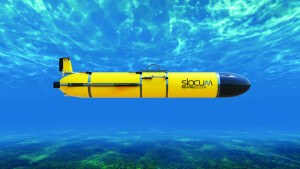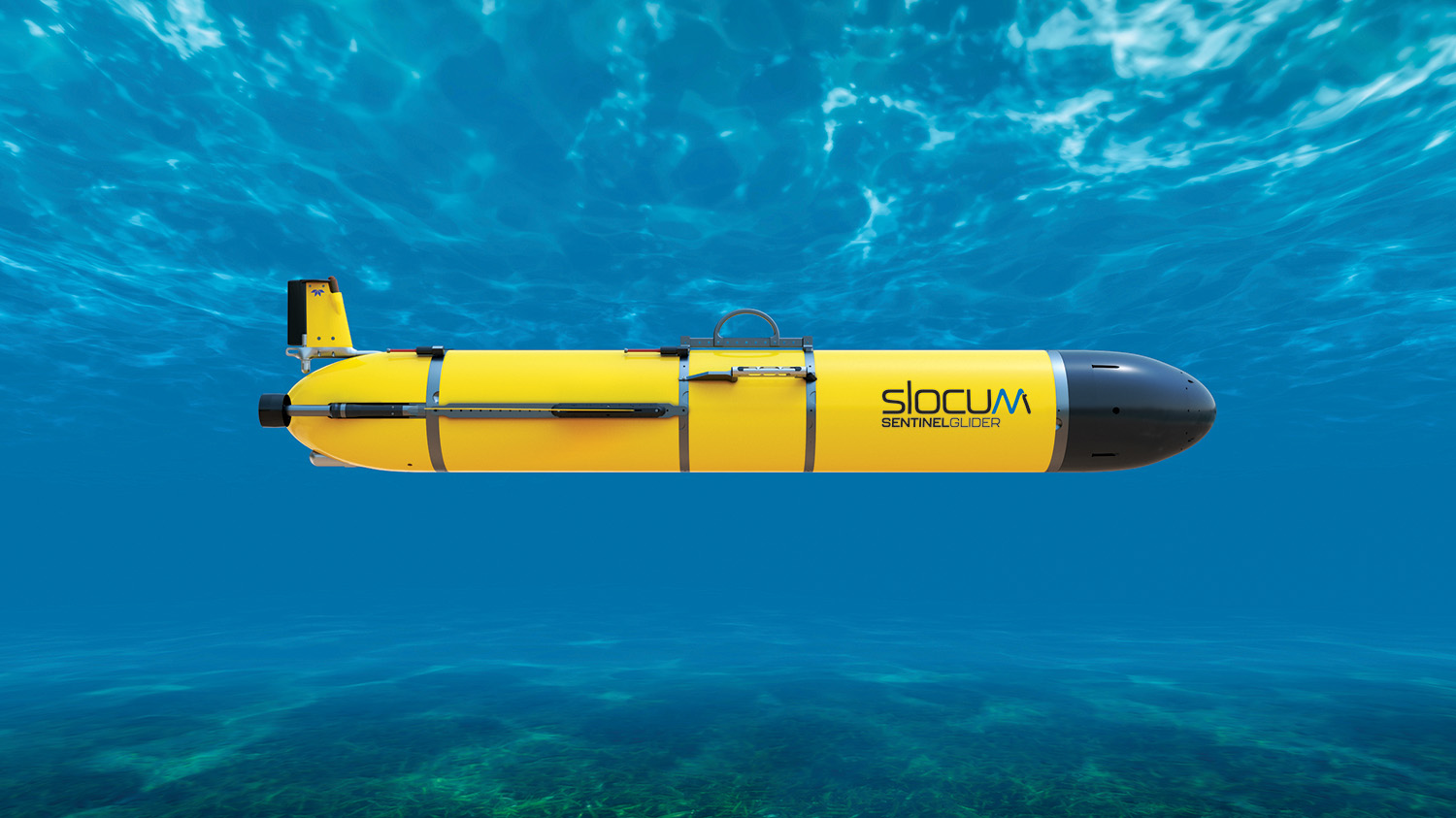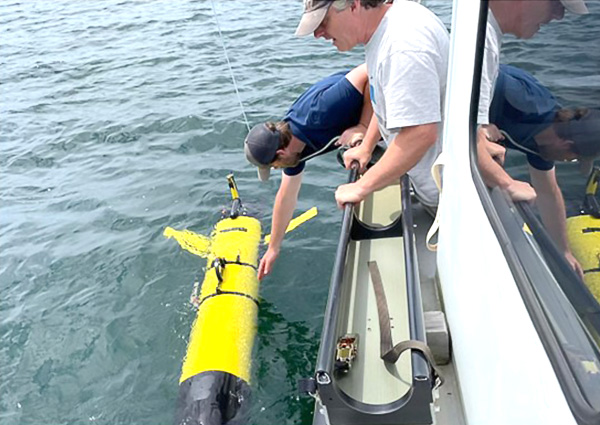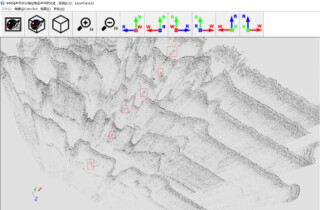

As the Glider Community Grows, so do Gliders
Anyone familiar with glider autonomous underwater vehicles (AUVs) is certainly familiar with the popularity this type of platform has seen over the past two decades, growing from emerging technology to one of the most widely used tools for oceanographic monitoring. In this time, the glider user community has also significantly grown, alongside the increasing number of use cases for which gliders provide a practical solution. Ocean monitoring – whether for environmental assessments, mammal monitoring, fisheries, physical oceanography, defense, or dozens of other missions – has driven advancements in glider technology to meet the modern demand for long-term data gathering of all kinds.
In response, Teledyne Webb Research has announced the launch of their newest product in the field of buoyancy engine driven underwater vehicles: the Slocum Sentinel Glider. The Slocum Sentinel Glider builds on the technology of Teledyne Webb Research's Slocum G3 Glider by expanding the capabilities and endurance of the vehicle.
Teledyne Webb Research was founded as Webb Research in 1982 by Doug Webb, an engineer at the Woods Hole Oceanographic Institution and pioneer of buoyancy engine driven underwater vehicles – unmanned platforms that use a pump to create changes in vehicle density to move through the water column and collect oceanographic data. Teledyne Webb Research uses this technology on its APEX Profiling Float and Slocum Glider products.
Since its inception as the first-ever gliding autonomous underwater vehicle, the Slocum Glider has grown to be the most-used glider platform in the world. These vehicles have been designed to be very efficient and can persistently gather oceanographic data for months or even a year at a time, communicating and sending data shoreside during surfacing events to its operators via Iridium satellite connections. Teledyne Webb Research has delivered over 1,100 Slocum Gliders to scientific, academic, and defense customers in the past 25 years, with over 50 sensor and hardware options integrated for a broad range of missions.
“As the use of Slocum Gliders grew, so did demand for increased capability: longer missions, more sensors – especially high-energy sensors – and the need to operate in more diverse water conditions. The Slocum Sentinel Glider answers that need," said Shea Quinn, Slocum Glider Product Line Manager at Teledyne Webb Research.

The Slocum Sentinel Glider scales the standard Slocum Glider through an increased diameter to gain better volumetric efficiency and is 8 feet in length. This expanded size allows the Sentinel to hold over 3.5 times as many lithium primary batteries as the standard Slocum Glider, and to physically accommodate up to 8 different sensor or hardware integrations.
“The size of the Sentinel gives it the energy capacity to increase mission length to over 2 years; or users can fit more high-energy sensors like active or passive acoustics, sensors with on-board processing, and imaging, without seeing a significant decrease in their overall mission length," said Quinn.
The Slocum Sentinel Glider will be driven by the industry's largest buoyancy engine, with a volumetric capacity of 4 liters – more than double any other available glider buoyancy engine. This affords the Sentinel a standard glide speed of 0.75 knots. It additionally features dual thrusters on the aft of the vehicle, which users can choose to activate for a sprint speed of up to 3 knots.
“The Sentinel is the world's fastest glider – its buoyancy engine is large enough to deal with large density changes in the water column and its thrusters give it the ability to stay on track in strong currents or other difficult ocean conditions," said Quinn.
The Slocum Sentinel Glider uses the established piloting, flight control, and communications architecture of the Slocum Glider, and allows for the same sensor and hardware options as the standard-sized vehicle.
“We are excited to bring this new product and capability to our customers," said Dan Shropshire, Vice President Business Development and Program Execution, Marine Vehicles, “The Slocum Sentinel Glider represents the next generation in persistent ocean monitoring, and its features greatly expand operational opportunities for our customers."
The specifications of the Slocum Sentinel Glider open several new use cases for the glider community. With an increased need for environmental monitoring, especially to track the impact of offshore construction on the ocean ecosystem, the Sentinel can accommodate a greater number of environmental sensor options for longer mission periods.
For glider users working in fisheries and conservation, the Sentinel can run several high-energy passive and active acoustic sensors, on-board processing, and imaging hardware simultaneously for months at a time, extending deployments even in remote locations like the Antarctic.
And for users who tend to operate in areas with drastic changes in water density, strong currents, and storm conditions – such as the Gulf of Mexico or the Indian Ocean – the Sentinel's large buoyancy engine and optional thruster capability will keep the glider on track.
It is expected that the Slocum Sentinel Glider will continue the upward trajectory of glider use in a variety of applications, including new, non-traditional fields for glider use, such as oceanographic mapping and surveying. The glider user community and the diversity of their missions will continue to grow – and the Sentinel is big enough to take on the challenge.
Do you have questions about this case study?
Get in touch with Teledyne Marine, and they would be happy to answer any questions you have about pricing, suitability, availability, specs, etc.




![3月21日-封面[1].jpg](https://cdn.geo-matching.com/voeE1ywo.jpg?w=320&s=6b3b1a0215d770f8797653e9202a8f52)




